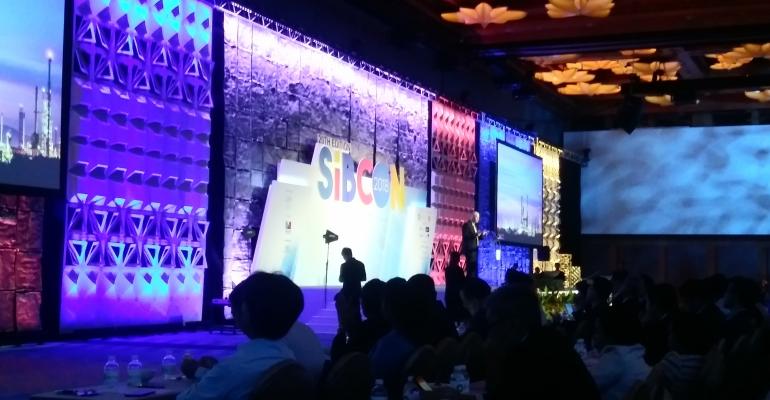CMA CGM took the groundbreaking step of ordering nine, 22,000 teu LNG-powered containerships last year, a move expected to provide a catalyst for the uptake of LNG as marine fuel. However, the number of LNG-fuelled vessels remains small at less than 200, if LNG carriers are excluded.
“The viability of ships using LNG as a fuel depends very much on the worldwide network of LNG bunkering infrastructure. Global LNG bunkering infrastructure is very much at an infancy stage today. Most LNG ships today are mainly coastal vessels limited to European waters,” Sartini said in a speech to the opening of the Singapore International Bunkering Conference (Sibcon) on Wednesday.
“We are happy to see that countries such as Singapore, Japan and the Netherlands investing in LNG bunkering infrastructure – Singapore will be ready in 2020. However, we have not seen any significant developments to suggest LNG will run to a global scale for it to be a viable solution for 2020.”
LNG as a marine fuel is an alternative option to meet the 2020 sulphur cap rather than burning low sulphur fuels or fitting exhaust gas scrubbers.
“For it to be operational certainty for carriers the global energy infrastructure must ensure with supply sources in more parts of the world,” Sartini said.
While CMA CGM has taken the plunge with LNG-fuelled mega-boxships the container line will primarily comply with the IMO’s 0.5% global sulphur cap through the use of low sulphur fuels, as well as installing scrubbers on some vessels.
Read about why CMA CGM ordered 'game changing' 22,000 teu LNG-powered containerships
“To replace a large scale fleet with LNG will require large scale investment and take a long time we as group operate 500 vessels and LNG vessels will be a very small portion of this,” he said.
Following Sartini’s speech the Suez Canal Economic Zone Authority signed a Memorandum of Understand (MoU) to join an LNG port focus group founded by the Maritime & Port Authority of Singapore (MPA) in 2014. In is the first port in the Middle East to join the group.
Apart from the MPA the other 11 members of the focus group are: Antwerp Port Authority, Port of Rotterdam, Port of Zeebrugge, Port of Jacksonville, Norwegian Maritime Authority, Ministry of Land, Infrastructure, Transport and Tourism, Japan, Ulsan Port Authority, Republic of Korea, Port of Ningbo-Zhoushan, Port of Marseille Fos and Port of Vancouver.
The MPA also recently joined the industry coalition SEA\LNG which aims to promote the use of LNG as a marine fuel.
Read more: LNG only 'viable option' today to tackle shipping's air quality issues
Copyright © 2024. All rights reserved. Seatrade, a trading name of Informa Markets (UK) Limited. Add Seatrade Maritime News to your Google News feed.


